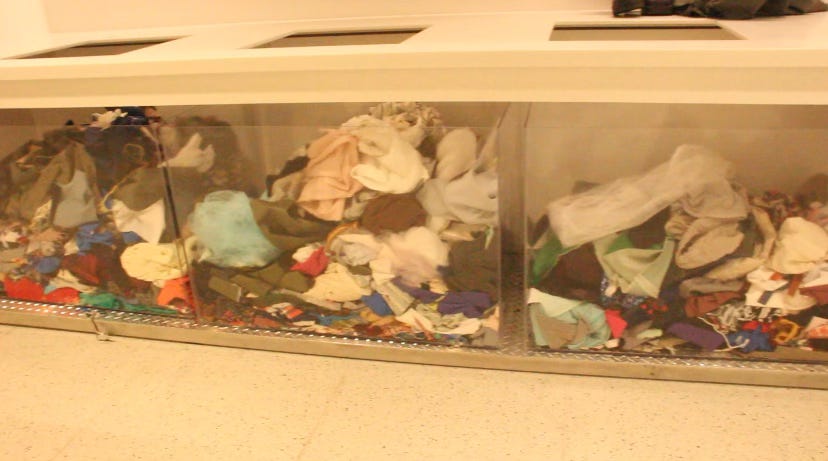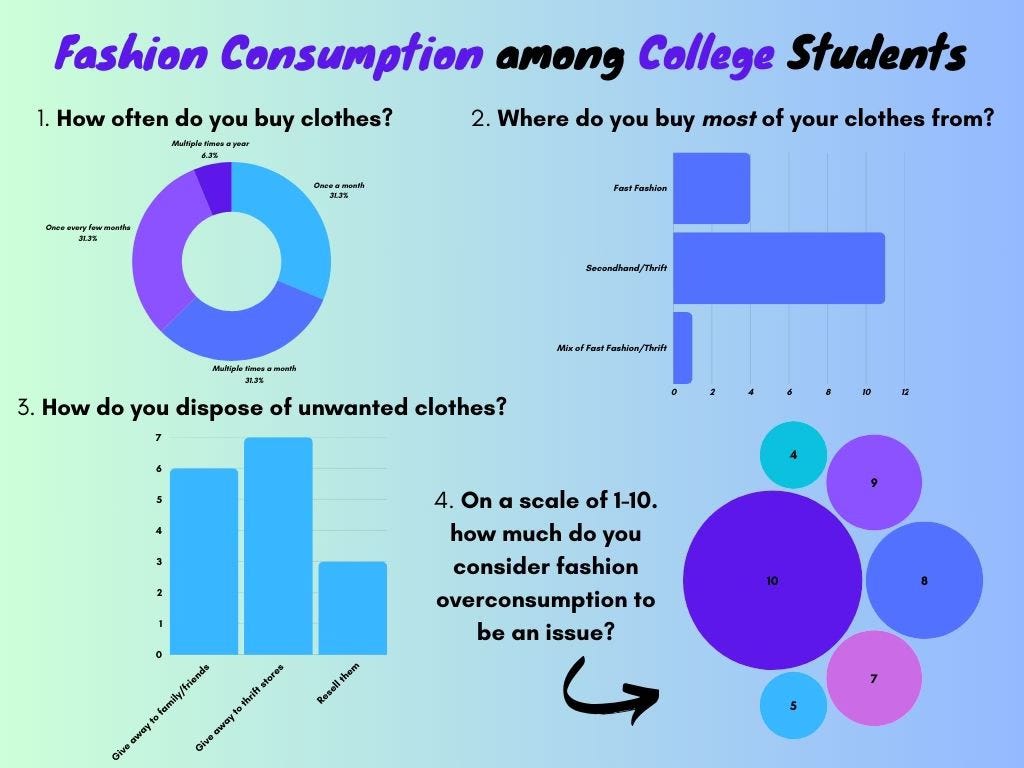Your Shopping Habits are Destroying Your Wallet -- And the Planet
Is your style worth more than the environment?

Young people are constantly searching for something — for meaning, for love, for purpose. Often feeling unfulfilled in the process, what better way to feel that void than with things?
Clothes, trinkets, devices, food, etc. After all, who cares whether or not you really need them?
Overconsumption is an epidemic that millions of young people, especially college students, have fallen victim to. Where this issue originates from is debatable, but its effects on the environment and its potential threat to our lives as we know them, is undeniable.
“Overconsumption worsens climate breakdown and increases air pollution. It exhausts the planet's life support systems like the ones that provide us with fresh water, and leaves us short of materials critical to our health and quality of life,” According to Environmental Advocacy Organization, Friends of the Earth UK.
The Fashion Industry
One of the biggest culprits of the overconsumption crisis is the fashion industry, which is the second largest industrial polluter and accounts for 10% of global pollution.
Not only is the production of textiles affecting our environment, but the short lifespans we give them are possibly doing even more damage.
On average, the United States throw out more than 34 billion pounds of used textiles. When evenly divided amongst the population, this amounts to 100 pounds of textile waste per person every year.
To make matters worse, many of these clothes end up in overcrowded landfills in countries such as Ghana and Brazil. In Ghana, landfills are often referred to as “Obrani Wawu”, which roughly translates to “Dead White Man’s Clothes”.
In addition to the negative environmental impact of the fashion industry, there is also a dire human toll to textile production. Earthday.org reported;
“The industry employs approximately 75 million factory workers worldwide, yet less than 2% earn a living wage. Garment workers endure unsafe conditions, wage theft, exhausting hours, minimal pay, and gender-based harassment.”
Overconsumption and College Students
With the worldwide implications in mind, how does this issue translate into the lives of college students? I polled 17 Kent State University students to better understand the spending habits of college-aged consumers and the results were fascinating.

Surprisingly, most of the students polled were somewhat conscious of their spending habits, with 70.6% of students claiming that they bought most of their clothing from secondhand and thrift stores.
Twenty-three and a half percent cited fast fashion brands (including the likes of H&M, Zara, and SHEIN), as their primary source of spending. This number, although still substantial, is significantly lower than the national average of 62%.
When asked how she disposes of unwanted clothes, Abigail, a Sophomore Fashion Design major said;
“I will always upcycle [clothes] or use them for something else, there is always a purpose for them,”
“I often will buy clothes, I’ll wear them, and then I’ll give them to other people,” exclaimed Taylor, another Fashion Design student, who went on to say that almost every piece of clothing in her closet is intentionally secondhand, except for her North Face puffer coat — which she has had for 6 years.
This sentiment of sustainability is reflected in the data collected from Kent State students, with 41.7% of students claiming that they give their old clothes away to thrift stores and similarly, 35.3% claiming that they give their old clothes to family and friends instead of throwing them away.
To further prove young peoples’ increasing awareness of environmental issues, when asked on a scale of 1-10 how much they considered fashion consumption to be a major issue, 47.1% voted 10. None voted below 4.
“I try as much as possible to not buy things I don’t need,” Joy, a graduate Emerging Media and Technology major, declared.
Abigail reflected on how her time at Kent State as a Fashion Design major has allowed her to further understand the fashion’s industry’s negative effects on the environment and what she can do to help.
“It [the fashion industry] has such a huge impact that I never realized so I’m definitely starting to consider it a lot more.”
Additionally, organizations on campus such as the Fabric Pantry accepts donations of textile scraps and materials, which students can access for free and repurpose however they choose.
With all this being said, although the state of our environment is dire and the world’s overconsumption is worsening it, young people are finally beginning to remedy their spending habits and take the steps towards a sustainable lifestyle.
Young people are the future, and the future of our environment depends on us. Judging from the responses of these students, our future is in good hands.



